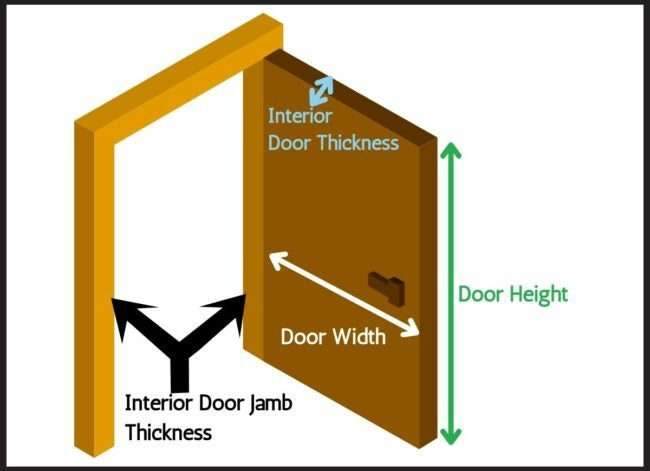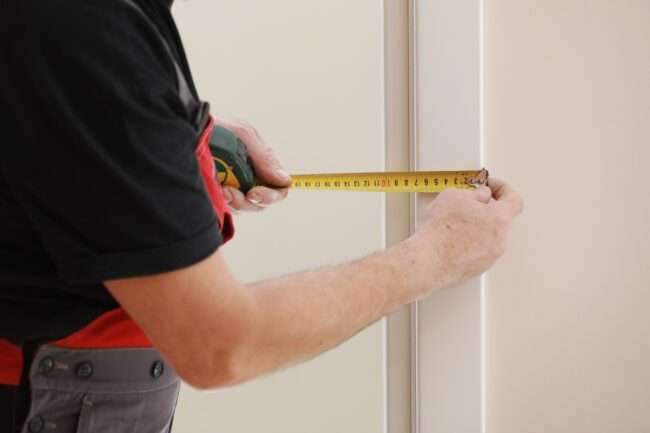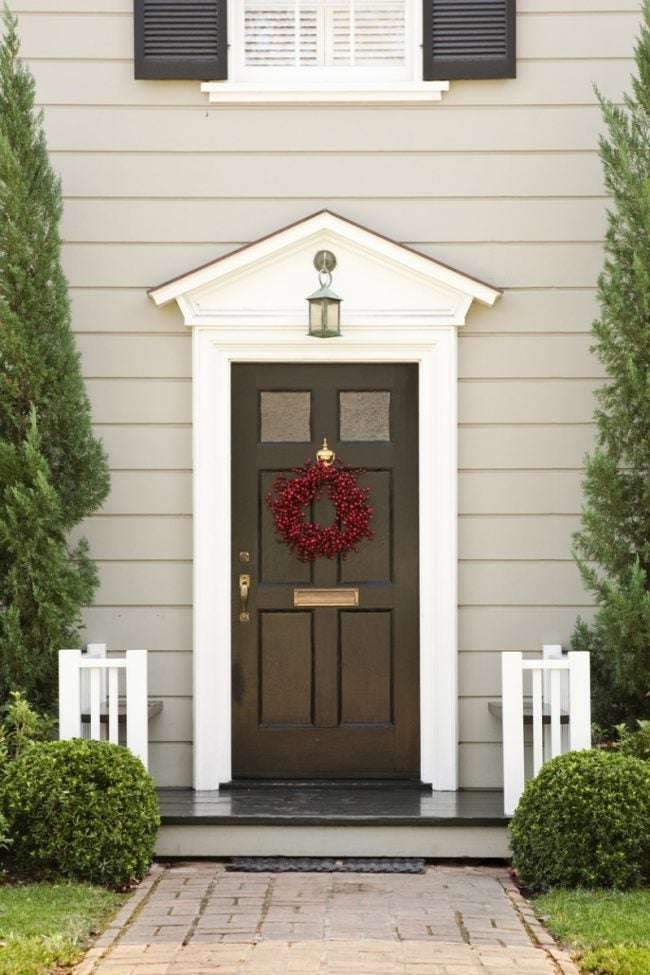Details of internal door measurements and methods of selection,
Door sizes in older homes are not standardized, and homes that predate standard manufacturing and local building codes often include older doors that are often handcrafted.
Today, doors come in standard sizes that many home improvement centers and online retailers stock, making it easy for DIYers to get them right off the shelf.
In addition to stocking standard door sizes, many retailers and lumber yards keep some less common sizes on hand.
Which DIYers can use in certain areas of the home.
Generally, the simplest and least expensive way to install or replace a door is to obtain a standard size door that can accommodate other standard building products.
What are standard door sizes, and what do they all mean?

Standard interior door dimensions
There are standard sizes for interior doors, and there are some alternatives available. Before choosing a new door, it can be helpful to understand the reasons behind standard door widths and heights.
an offer
Homeowners may think that they have the right to design the interiors of their homes the way they want, but this is not the case.
All builders, DIYers and industrialists must follow building codes, and these codes include instructions for standard interior door sizes.
Here are some of the most popular interior door offerings:
The standard door width for interior doors is 32 inches
This 8-inch wide door is described as a 2/8″ door, which is the minimum recommended width required for a pass-through door.
Some authorities may allow existing small doors to be replaced by the same size, but renovations, additions or new construction often require 2/8-pass doors.
Some retailers stock narrower doors, but they are usually reserved for cabinets and utility spaces
It is possible to find prefabricated doors in 30″, 28″, and 24″ wide, but they are almost always reserved for closets and utility access areas.
In some cases, a homeowner may be allowed to replace a 2/6 (30 inch wide) driveway door in an older home with another 2/6 door – that is, if the local building inspector approves.

to rise
The standard height for interior passage doors, or doors for people to pass through, is 80 inches.
Cabinet doors may be slightly shorter, at 78 inches.
The door jamb must meet these minimum height requirements, but can exceed them entirely if the dimensions of the house allow.
If a homeowner wants a bedroom door that is 96 inches high, they can do so as long as there is enough room under the header (the structural member above the doorway).
Standard door height inward is 80 inches
An 80-inch door is the most common height for passage doors that lead from one room to another. This 6-foot-8-inch door is called a 6/8 door.
Cabinet doors could be a little shorter, at 78 inches
A door is called a 6/6, which is 6 feet 6 inches high, and is used for lockers, mechanical rooms, utility rooms, or other doors that people do not usually pass through.
inner thickness
Interior door thicknesses are not confusing or terminologically heavy like heights or widths.
When shopping for interior doors, you generally have a choice of two thicknesses: 1⅜ and 1½ inches.
Both are common sizes within residential buildings, and can be either a hollow core (nothing inside the door but air and some frame members) or a solid core (usually filled with foam or sawdust).
There are quarter-inch doors, but they are fire doors designed to resist the spread of fire.
Also, doorways in load-bearing walls have headers above them. These headers serve to distribute the weight of the structure on both sides of the door frame.
This title cannot be removed without causing unsafe structural issues which conflict with building codes in most cases, so it may not be possible to use a taller door.
When it makes sense not to have a standard size door
Although there are standard door sizes and building codes that require them, there are a few exceptions to the rules.
Entrance doors in large hallways are often very tall, and those in older homes do not need to meet the same requirements or codes in some cases.
Here are some of the more common exceptions to standard door sizing rules.
Entry doors
While the 36-inch door width is plenty for an interior door, it is the standard size for entry doors.
The standard height remains the same at 80 inches, and these slightly wider doors allow large appliances and furniture to be moved into the home.
Most standard exterior door sizes may be slightly thicker than interior doors as well, with a standard thickness of 1 inch.
The thickness of a standard door jamb is similar to that of an interior door jamb, either 4-9/16″ or 6-9/16″ to fit 2-by-4 and 2-by-6 walls, respectively.

Older house doors
Large doors can overwhelm small rooms, so if space is at a premium, a narrow door can provide a cleaner look and add wall space.
Before installing a narrower door, it is important to check local building codes.
Some municipalities require that all interior doors be at least 24 inches wide.
Areas larger than 10 square feet may need at least one door that is 32 inches wide.
Replacing a door with a slimmer update involves removing the old door and jamb and reconfiguring the rough framing in the wall so that the new hinged door fits into the space.
Doors wider than they need to be
An old Victorian grandma’s sofa may be well cared for and freshly reupholstered, but it may not fit the typical mold.
If the room is very long and overhangs the doorway, it may be a problem to use standard doors.
And in the most non-standard cases, the only option is to move the sofa to another wall.
However, if the door is 36 inches wide and does not need to be by code or ADA regulations,
It may be possible to remove the existing door and frame in order to reduce the size to a 2/8″ door.
How to measure for a new door
Before you measure a door, it’s important to know if you want a panel door or a pre-finished door.
A slab door is only a door that does not have morts for hinges, and may not have a hole for a doorknob.
A pre-hung door includes the door and surrounding frame, including hinges and a pre-drilled hole for the handle.
Since there are no standard sizes for door hinges (they vary in size and position),
Rarely can a door come directly out of one pre-hung frame and fit into another.

How to measure for a pre-hung door
Measuring a pre-hung door isn’t complicated, but there are a few steps you should follow to ensure you purchase a door size that will fit the rough opening.
Once you have these measurements, you will likely be able to purchase a pre-made hanging model off the rack at your local home improvement center.
The most important thing to measure when sizing a new hinged door is not the door or the frame, it’s actually the rough opening.
Carefully remove the door casing around the sides and top of the door frame. This should reveal the rough opening or framing behind the drywall.
Using a tape measure, drag the measurement from one side of the rough hole to the other.
Because those rough holes are, well, and you’ll need to measure at the top, bottom, and center of the frame, use the largest of these measurements depending on the width of the door.
Now, measure from the bottom edge of the top of the rough opening (header) to the floor, and again, you’ll want to take several measurements – one from the left side of the top of the door and one from the right side, you have to take the largest measurement.
For a standard 2/8″, 6/8″ door, the rough opening is approximately 34″ wide by 82″ long,
Just enough space around the door frame for coloring, allowing the DIYer to achieve a perfectly upscale door.
How to measure for a slab
A slab door is just a door, it does not have morts for the hinges, and sometimes it does not even have a hole for the knob lock assembly.
DIYers who buy panel doors will have a little customization,
But chipboard can be a slightly more affordable option than a pre-hung door.
And measuring for a slab door is about as easy as they come.
Open the door all the way.
Use a tape measure to determine the width of your door. Measure across the door in several areas from top to bottom
(This step is especially important if you have an older home.) Record the largest measurement.
Measure the door from top to bottom, making sure to measure the height of both the left and right sides of the door, and note the largest measurement.
Use a tape measure to check the thickness of the door, this should be consistent throughout the door.

How to measure a door screen
Screen doors can be a great way to allow air or light to flow into a home while keeping pets in and critters and insects out.
However, the screen door must fit properly to be effective in its function.
Screen doors do not come with the same frames as previously hung doors,
Instead, they usually have multi-piece frames that attach directly to the trim around the door.
Because of this, measuring for a screen door is a slightly different process, but it’s really no more difficult than it is with a traditional door.
Note: All measurements listed below should be taken from the inside to the inside of the edges, or from the sill to the inside of the top.
Using a tape measure, measure across the door from side to side. Take three measurements: top, bottom, and middle. Record the largest measurement.
Use the tape measure to measure from the sill to the inside of the upper trim piece, measure left and right and write down the largest measurement.
Use these measurements to purchase a new screen door, and this kit will come with a multi-piece frame that must be attached to the outside of the door frame.
These groups usually require pruning that is at least 1 inch wide.
For more architectural news


 العربية
العربية
